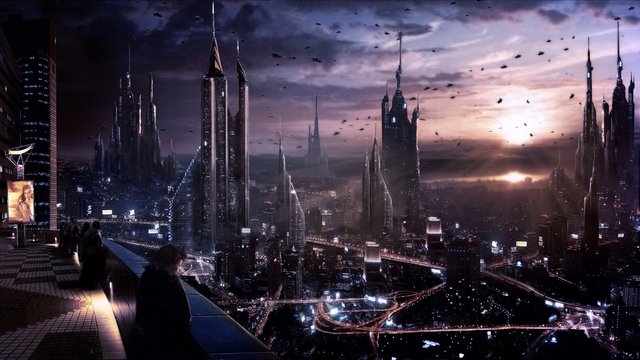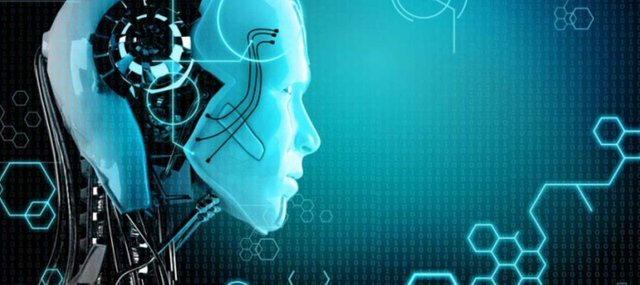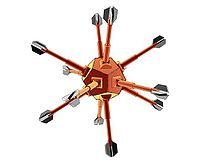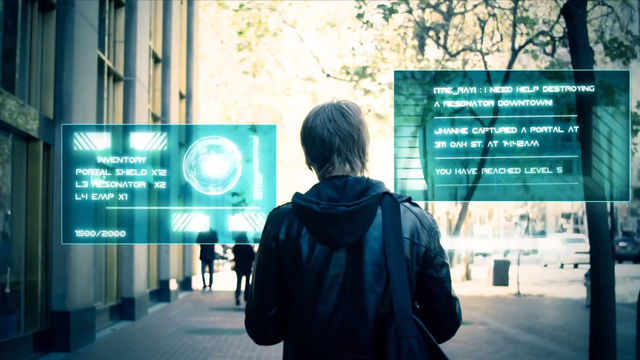The Future of Humankind - Changes We May Experience #1

Up until this point, many predictions of scientists and sci-fi writers have already become a reality, but what does the future bring? In hundred years, how would our world look like? Are we still driving cars and waiting in traffic? Are computers all over our world? Do we keep our heads in the jars? What animals have been extinct? Will there be a universal cure for all diseases?
Is there a possibility that we'll have to adapt for a life under water, in an ice age or in space? What can cause a Utopian outcome?
We could imagine so many different things, but let's have 'known' laws of physics and tested prototypes as guidelines for our assumptions.
I'll make this into a multiple-part series since there is so many possible scenarios and visions to discuss.
So, it's the year 2116. Let's imagine how could our modern life look like.
Our bodies and our environment will be able to self-reconfigure

In the past, robots had specific shapes, sizes and usage based on purpose they are built for. Whether they are used for cleaning the house or for production in car industry, robots we know are rigid and unable to change form (with exception of that T1000 terminator).
But let's imagine for a second that we can combine several of these robots into a small "team" that can transform itself whenever in need for a different task. For example, it may become a worm-like entity to crawl through a small hole, then create some sort of wheel to roll down the descent and finally transform into a spider-like creature to cross bumpy terrain.
This is called self-reconfiguring modular robotic system. These tiny modules can have censors, electronics, processors, memory and 'actuators', components responsible for mechanism control. Modules have the ability to appear or disappear, connect or disconnect from each other and control their relation towards environment.
With their ability to adjust to different forms, they have big advantage compared to classical robots. Now imagine if these modular robots are microscopic, constructed in molecular nanotechnology with "intelligent" polymorphic substances. They would have 8 arms pointing in all directions to connect with neighbors, share energy and information.

This is known as utility fog, and these nanobots are called "foglets". They could take the shape of virtually anything, so your nightstand can transform into a sofa in the morning and your house could disassemble to make room for a swimming pool.
Another huge application of the nanobots will be in the human body itself. They will be injected all over our bodies to enhance our abilities, upgrade lack of our immune system and replace damaged parts like we do on automobiles today. In a futuristic ideology known as transhumanism, we will no longer be limited by our physiology, but become the biological machines on the inside.
Augmented reality will be a part of everyday life

When internet becomes available through contact lenses, we'll be able to overlay our physical perception with virtual content. Virtual objects will become part of our physical reality, that way creating a compelling experience.
Using this extended reality we will have all the information we need in a blink of an eye. You won't have to go to the store to try the new season's clothing or to see how some piece of furniture will look like in your living room. Teachers, speakers, historians will have all the maps, references and materials instantly. Actors will have their scripts. Tourists all the necessary guides.
When looking for new piece of electronic, simply pointing at the device will pull all the necessary information, prices and reviews.
Getting to know a person might not be that exciting since you'll have their entire biography available, and it's probably going to be some sort of scoring system to check for personality match.
Much of this is already starting to happen with companies like Google and Ikea. Smartphones and tablet computer possess elements like camera, gps, compass and accelerator which makes them excellent medium for augmented reality testing. Head-mounted displays, helmet-like devices that, when placed on a forehead, show the elements of both physical and virtual reality to a person. Even though there are some challenges and privacy issues, this concept is only going to expand in the future.
Hope you like this first part! If you do, don't forget to upvote, comment and resteem it. Also make sure to follow @alcibiades to stay updated about future posts.

Just some correction: transhumanism is not ideology, is a branch of philosophy about changes related to technology. What you are talking about in your article is a branch which is named "extropian".
Thanks for the clarification!
YW. Don't get me wrong, I liked your article: I am just into this issue (see my avatar) and I love this interesting discussion on how humankind evolves, so I want the people to have the correct idea of it :)